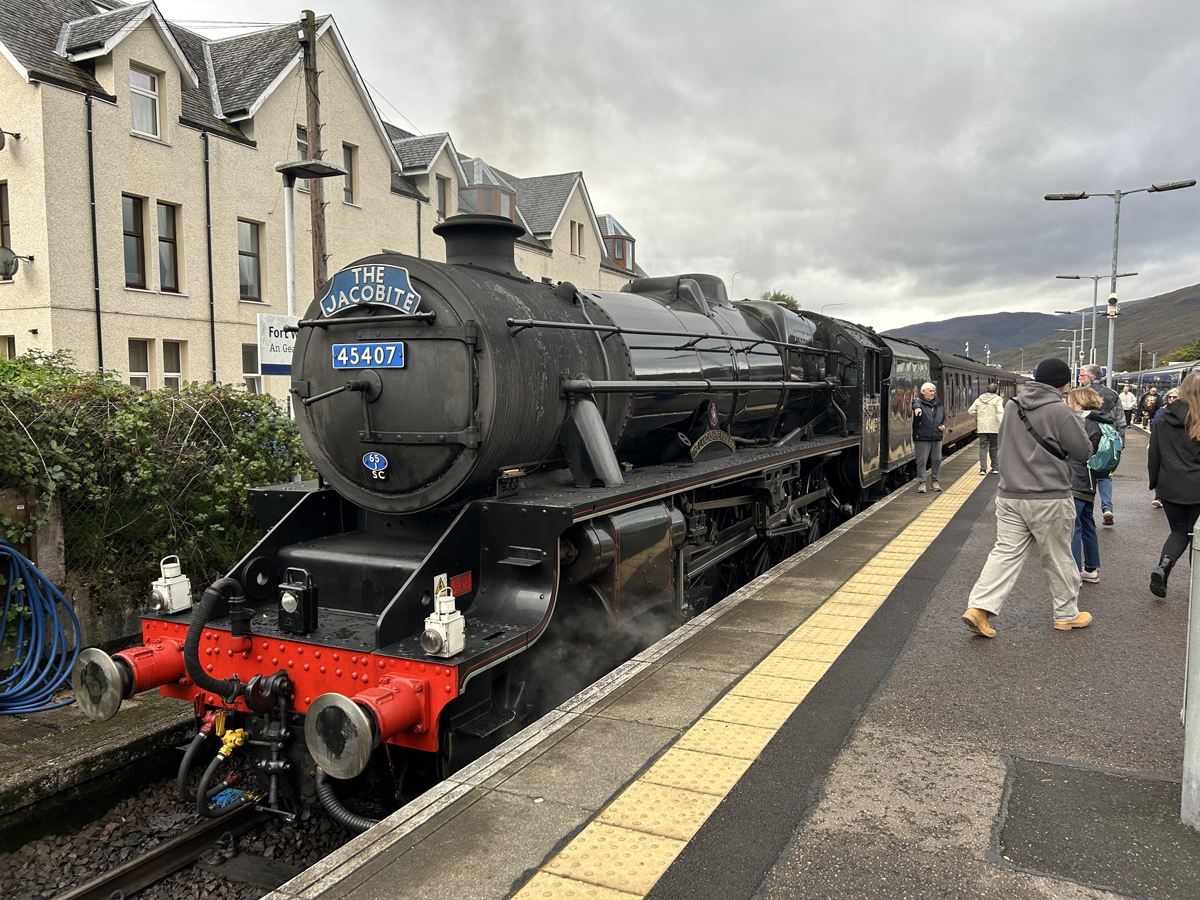
GLASGOW, Scotland — Another night, another sleeper train.
Tonight, I’ll be concluding my two-night experience with Scotland’s Caledonian Sleeper, taking the 11:40 p.m. train from Glasgow Central Station back to London Euston, where I started this quick excursion into Scotland on Tuesday night.
Since my previous post, I have made a 418-mile, 12-hour, 45-minute trip from London to Fort William, Scotland; taken a ride of about 4 hours from Fort William to Glasgow Queen Street station; met with a couple of representatives of Caledonian Sleeper to discuss details of the operation, and now I’m waiting for boarding for the Sleeper to begin about 10 p.m. We’ll be back in London about 7:15 a.m. on Thursday, but the Sleeper lounge is available until 10 a.m. for those wanting a snack or a shower (for those who don’t like showering on the train, or don’t have shower access), or simply not wanting to rush off.
I’m not going to say too much about the Sleeper here, because it deserves a deeper dive, but I’ll say this: I’m glad I took the trip. It’s a well-executed service that, on the route to Fort William, is capped by some dramatic Scottish Highlands scenery. That the weather was gray and dreary didn’t make the scenery any less spectacular, although it obviously would have been nice to hit a clear, sunny day.
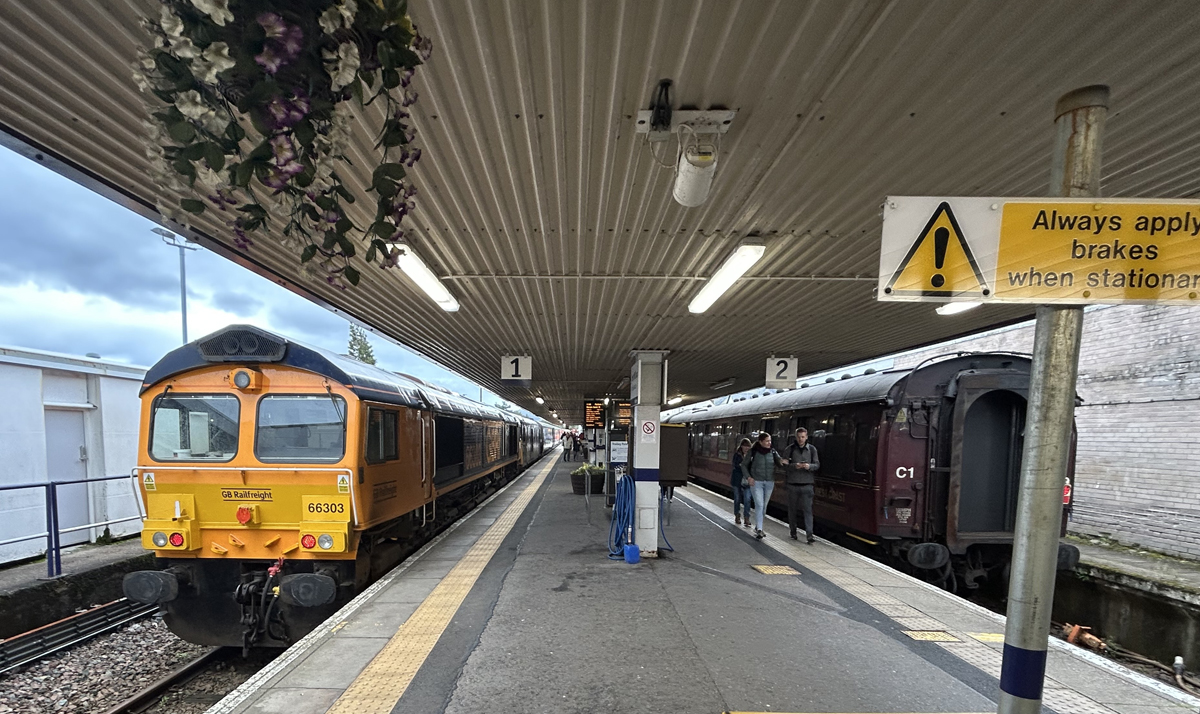
ScotRail did not make nearly as positive impression with its service from Fort William to Glasgow. The utilitarian equipment (a four-car diesel multiple-unit trainset) was pretty much what I expected; it would be unfair to compare it to the Sleeper. But when I booked online, I selected a window seat facing in the direction of travel. What I received was a backward-facing aisle; other than that, it was exactly what I asked for, which to say I did clearly have a seat. Not everyone was quite so lucky; one couple on my car found their seats had been double-booked, and ended up moving around a few times before finally discovering a pair of seats that were, in fact, available. There were empty seats, but not many; this 11:40 a.m. train was apparently the departure of choice (among the four daily) for tourists heading back to Glasgow and beyond.
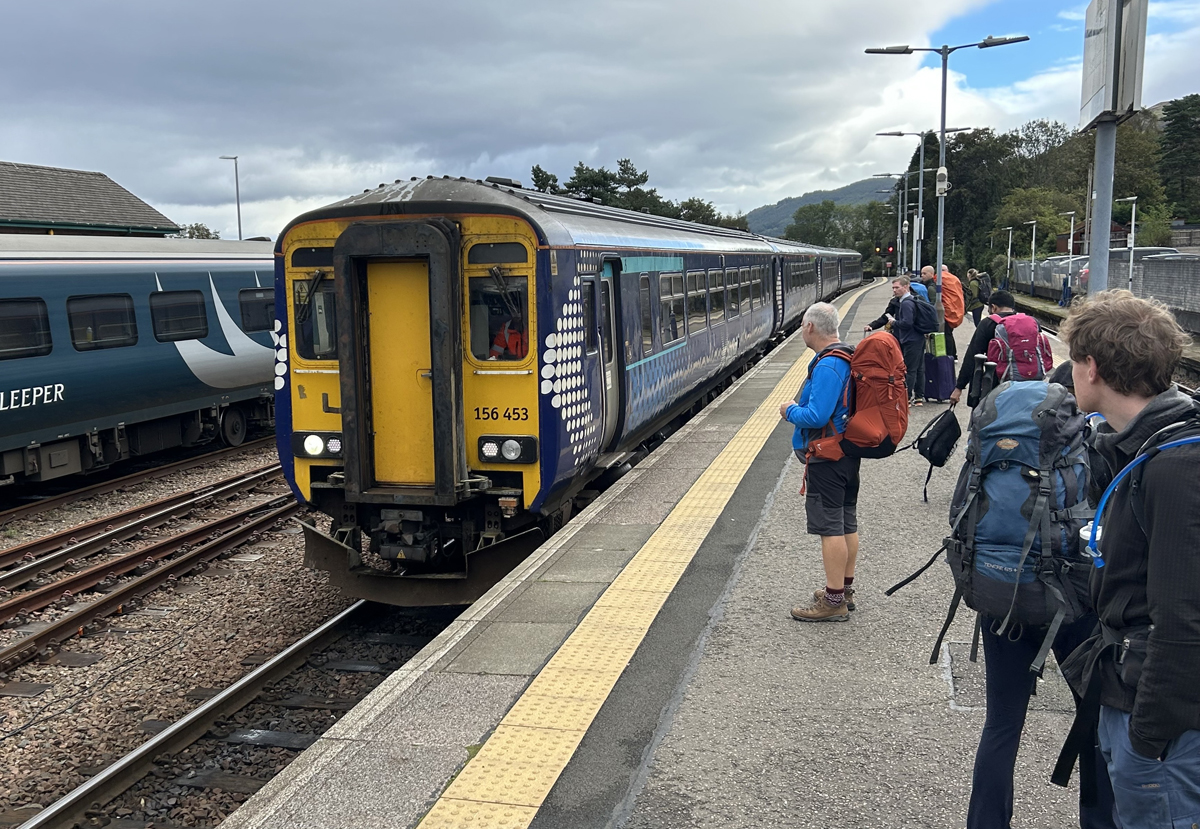
Oddly, while my seat was in car A, it was the second car in the train; the fact that the train changed directions upon leaving the stub-end station at Fort William doesn’t explain this; that means it would have been the third car upon arrival. (Car B was at the head end, after previously being the last car. I never did get a chance to see if the other two cars were C and D, or in what order.
That near-capacity crowd reflects the fact that Fort William is unmistakably a tourist town. Based on the high-end backpacks and apparel choices, I’m fairly confident hiking and other outdoor activities have something to do with that. (And based on the enormous amount of luggage per passenger, it’s safe to say this was not a train full of locals.)
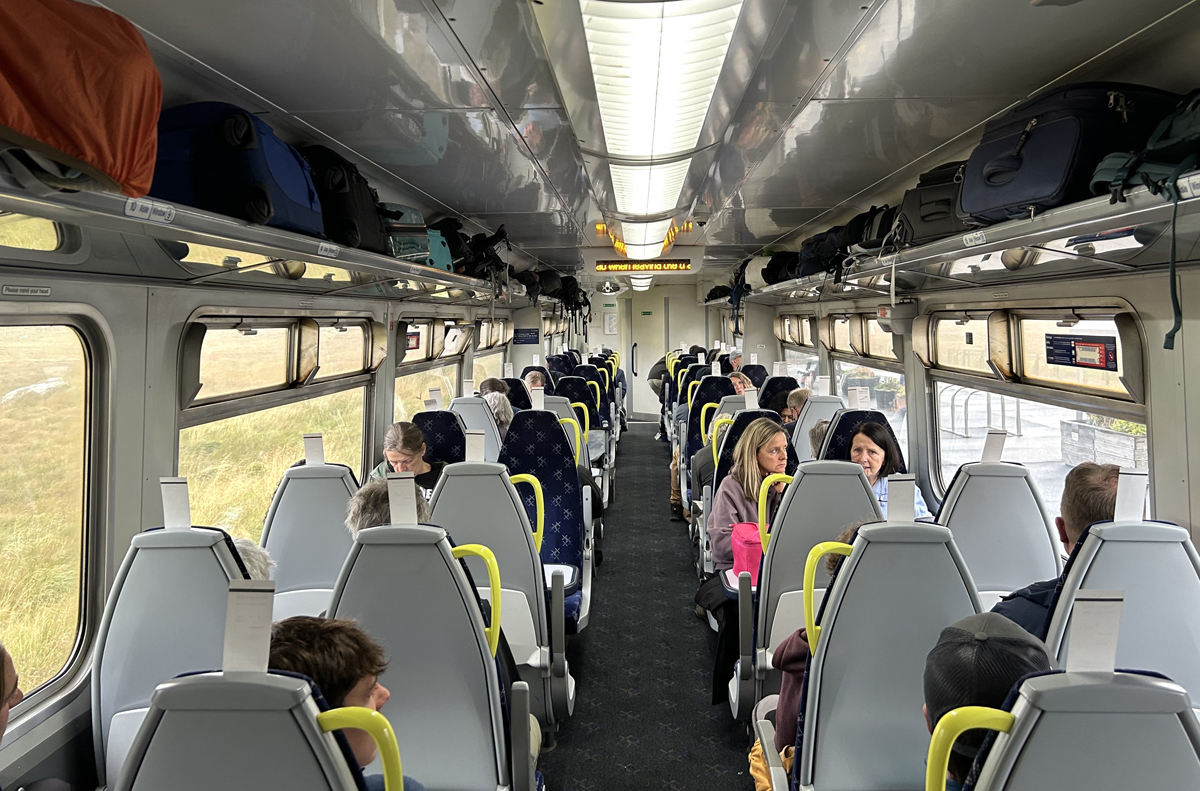
But I know with certainty that for a large number of visitors — as for our readers — the primary attraction is the “Jacobite” steam train, better known to the world at large as the “Harry Potter” train. The train itself wasn’t used in the Harry Potter films, but the route was, because of a spectacular curving bridge, the 21-arch Glenfinnan Viaduct. Thanks to the Potter films, the train draws riders from all over the world, as does the viaduct itself, where train crossings are well attended. The train was shut down for a short period while over British safety rules, but eventually made the necessary modifications to achieve compliance and is once again running regularly. [See “Scotland’s ‘Harry Potter’ train to restart …,” Trains.com, April 12, 2024].
The Jacobite left about 15 minutes after the Caledonian Sleeper arrived; I stayed out on the platform long enough to shoot this video of the train’s departure, which mostly features a large and poorly placed cloud of steam. Prepare to be disappointed. (“Well, that was a complete waste of time,” a photographer next to me grumbled. It was hard to disagree.)
If you’d like more information on the Jacobite, it’s available here.
If you’d like more information on my trip — well, that will have to wait until the next installment. I have another train to catch.






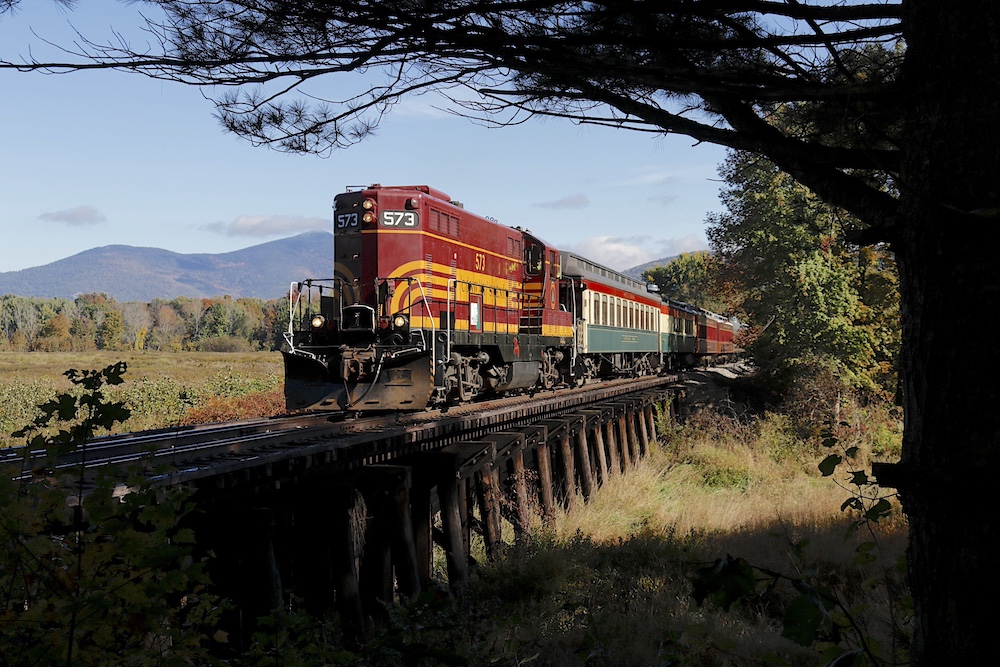
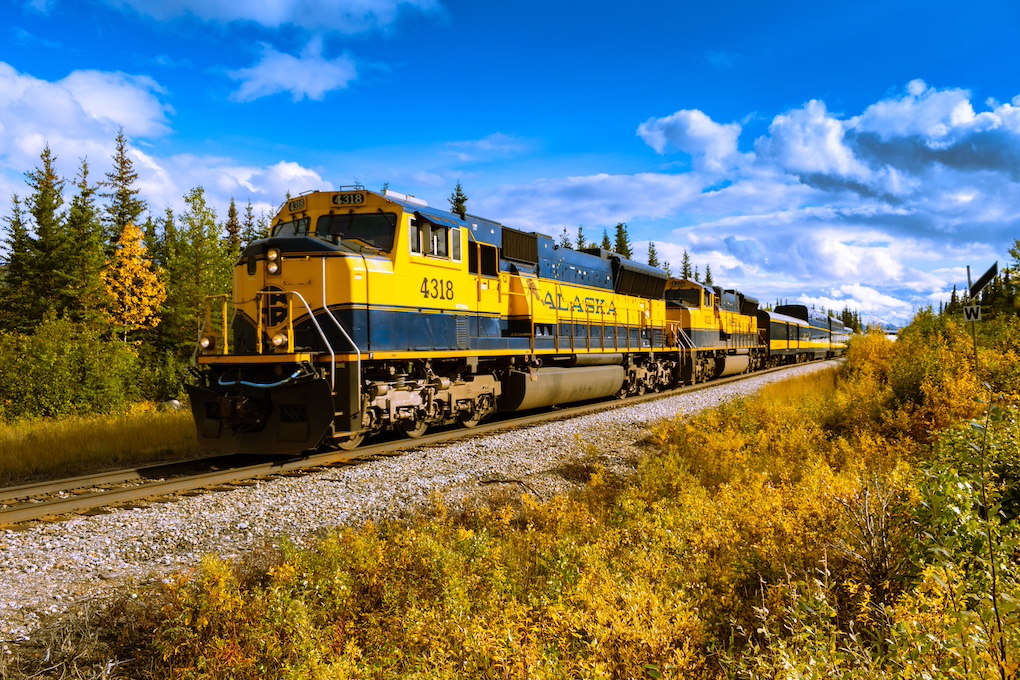
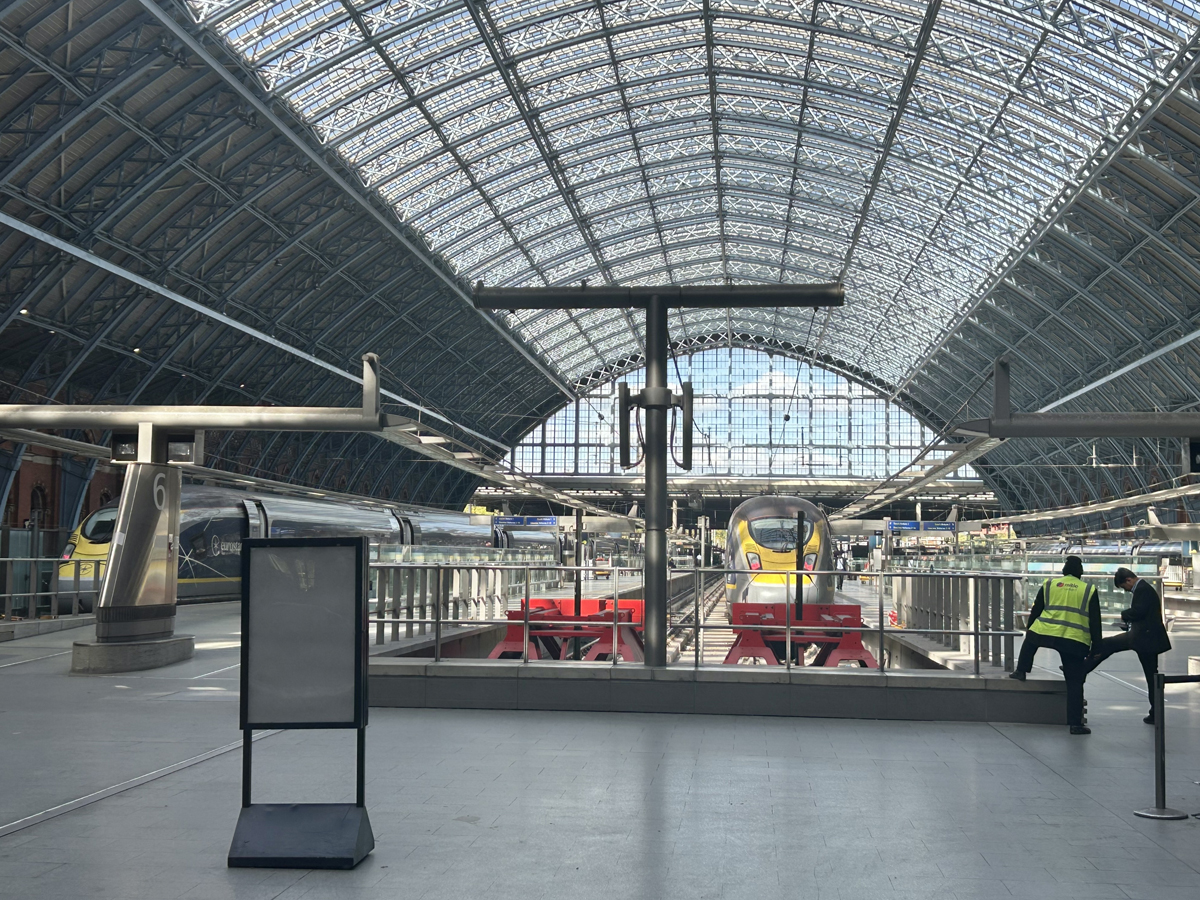

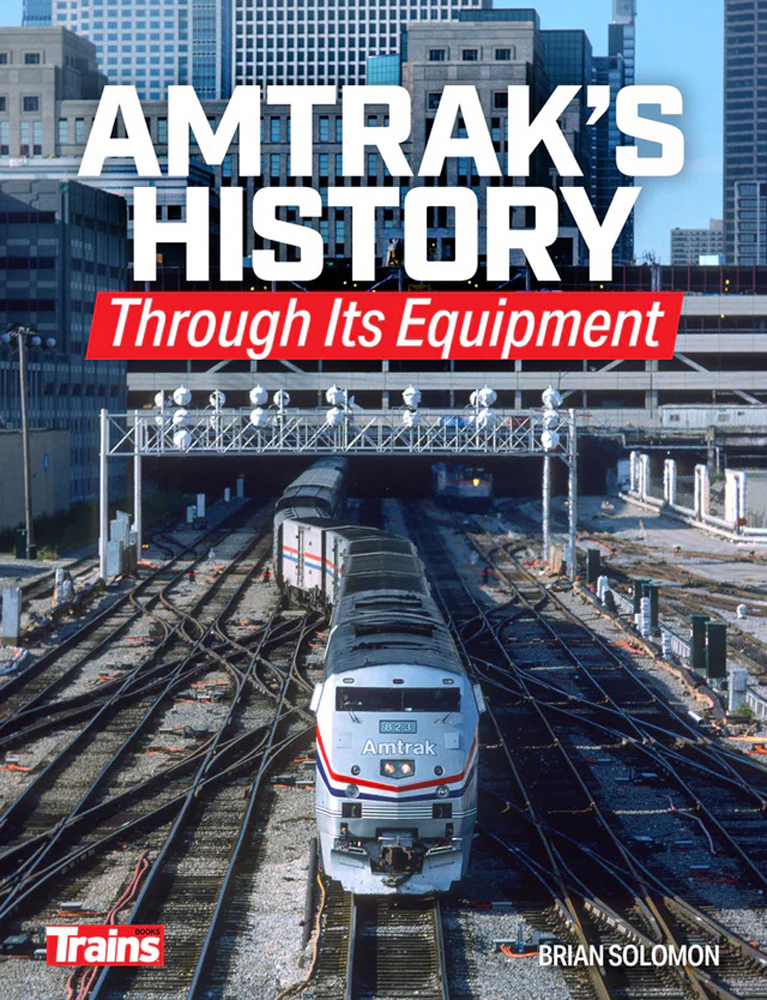
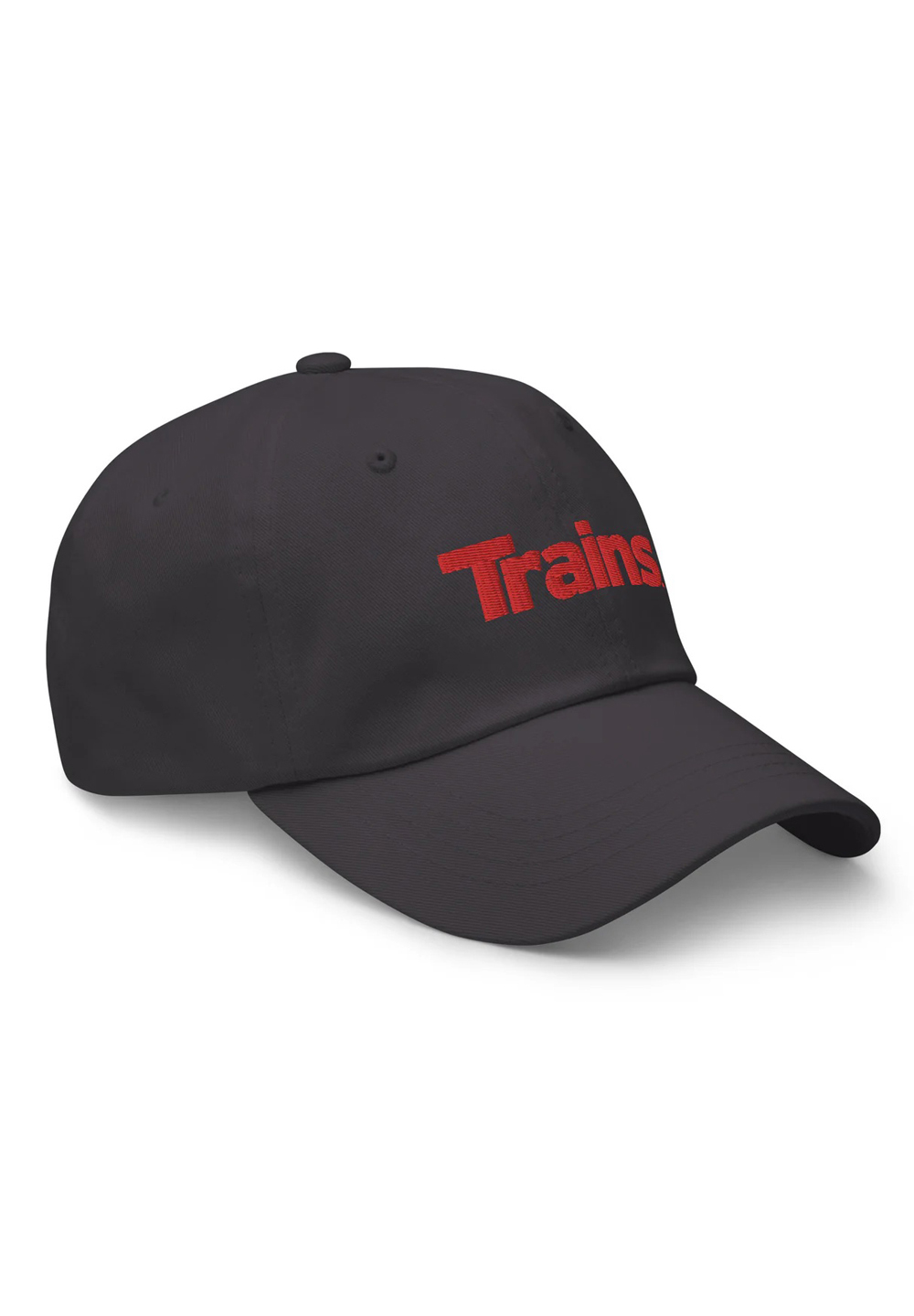
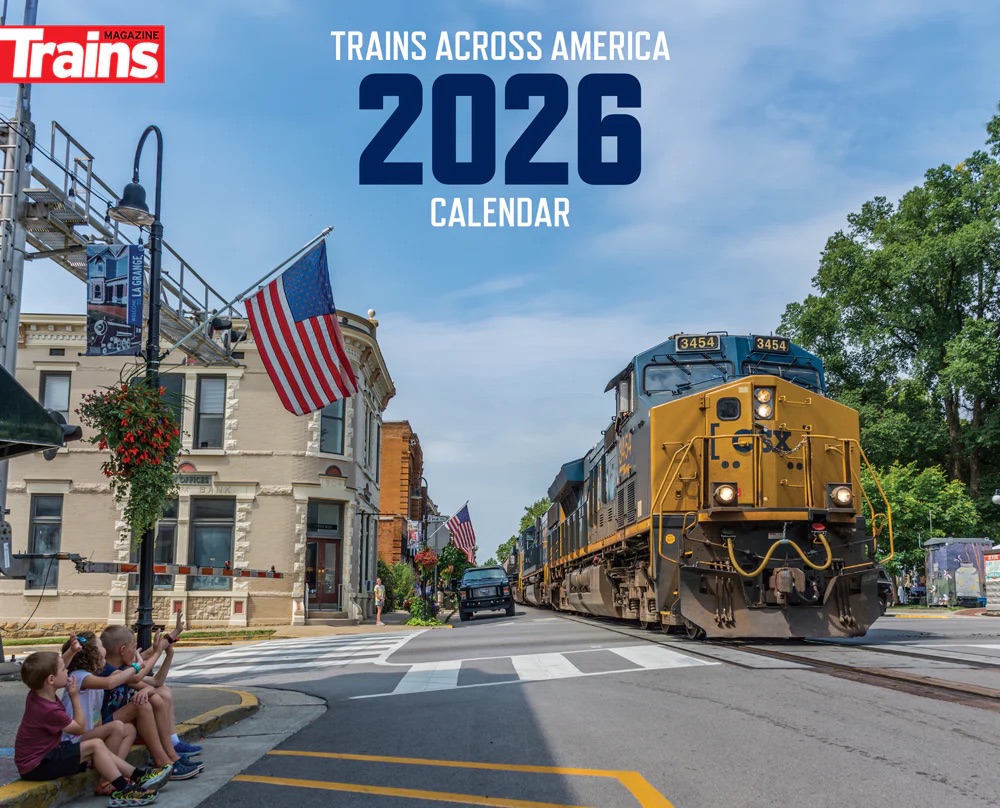
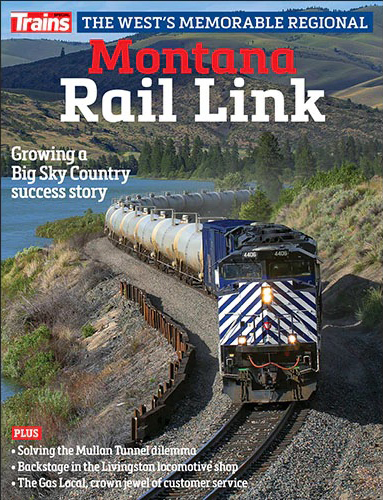
Further to my note about the vagaries of car identification: I changed trains yesterday at Hebden Bridge, deep in the Yorkshire Pennines. I travelled there on the 10.58 Redcar Central to Manchester Victoria, which was formed of two three-car Class 185 DMUs. The train’s six car were labelled ABCGFE. Whilst waiting for my onward connection, the 12.59 from Manchester Victoria to Redcar Central arrived, also six cars, labelled CBAEFG. “Fun” locating your seat! Even fixed-formation trains such as Class 390 “Pendolino” sets aren’t uniformly lettered – the cars run through A to F, then U, then G, H, followed by J and K.
Even gray days in Scotland have their beauty; with some steam smoke mixed in makes it even better.
DMUs usually have cars lettered by labels, not displayed electronically. Hence, if two sets are coupled, and whoever is responsible for the lettering doesn’t ensure that, when the train is marshalled, the lettering follows the alphabet, the cars can be confusingly identified. Example: from the front of the train, the first car could be lettered B, the next A, then the second set could be D, then C.